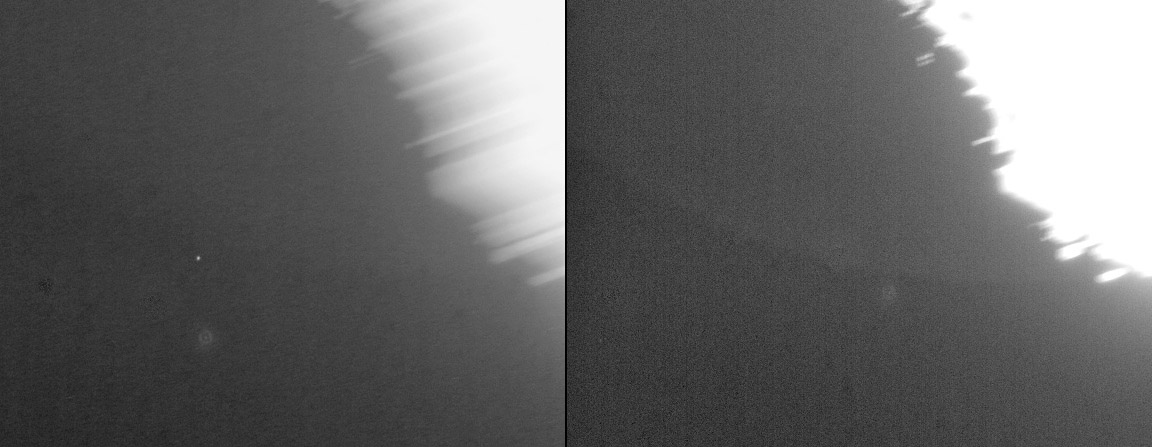Difference between revisions of "May 19, 2010"
| (5 intermediate revisions by the same user not shown) | |||
| Line 1: | Line 1: | ||
__NOTOC__ | __NOTOC__ | ||
=Eskimo Moon= | =Eskimo Moon= | ||
| − | + | <!-- Start of content --> | |
<!-- ws:start:WikiTextHeadingRule:1:<h1> --> | <!-- ws:start:WikiTextHeadingRule:1:<h1> --> | ||
<!-- ws:start:WikiTextLocalImageRule:16:<img src="/file/view/LPOD-May19-10.jpg/143024061/LPOD-May19-10.jpg" alt="" title="" style="width: 1000px;" /> -->[[File:LPOD-May19-10.jpg|LPOD-May19-10.jpg]]<!-- ws:end:WikiTextLocalImageRule:16 --><br /> | <!-- ws:start:WikiTextLocalImageRule:16:<img src="/file/view/LPOD-May19-10.jpg/143024061/LPOD-May19-10.jpg" alt="" title="" style="width: 1000px;" /> -->[[File:LPOD-May19-10.jpg|LPOD-May19-10.jpg]]<!-- ws:end:WikiTextLocalImageRule:16 --><br /> | ||
| − | <em>image by [mailto:vswmart@yahoo.com </em><br /> | + | <em>image by [mailto:vswmart@yahoo.com Martin Elsaesser]</em><br /> |
<br /> | <br /> | ||
These are probably the worst pictures of the Moon to appear in LPOD. They are overexposes, there is considerable blur and they are just nor pretty. But they are historic. I think they are the first images of the Moon and the Eskimo Nebula. Here is Martin's explanation:<br /> | These are probably the worst pictures of the Moon to appear in LPOD. They are overexposes, there is considerable blur and they are just nor pretty. But they are historic. I think they are the first images of the Moon and the Eskimo Nebula. Here is Martin's explanation:<br /> | ||
| Line 10: | Line 10: | ||
<em>In the evening of 24.03.2010 the half moon occulted the well know Eskimonebula NGC 2392 in the constellation Gemini. The sun was only 4° below the horizon (as seen from Munich, Germany) when the occultation started, so the brightness of the sky was an additional challenge in observing this rare occultation. The skies were reasonably clear and the moon well placed, high in the sky. By using a 110mm apochromatic refractor and a narrow-band O-III Nebula filter together with a DMK41 black and white video camera contrast could be enhanced enough that the faint nebula was (just) visible in the contrast enhanced live-view of the camera, despite still blue skies and the approaching glare of the moon. Dozens of images were aligned on the visible companion star and stacked in the usual fashion, to create images of this meeting. This success clearly demonstrates that often heard statements such as "The light of the Moon prevents deep-sky observing" are not absolutely true! It just takes a more determined effort.</em><br /> | <em>In the evening of 24.03.2010 the half moon occulted the well know Eskimonebula NGC 2392 in the constellation Gemini. The sun was only 4° below the horizon (as seen from Munich, Germany) when the occultation started, so the brightness of the sky was an additional challenge in observing this rare occultation. The skies were reasonably clear and the moon well placed, high in the sky. By using a 110mm apochromatic refractor and a narrow-band O-III Nebula filter together with a DMK41 black and white video camera contrast could be enhanced enough that the faint nebula was (just) visible in the contrast enhanced live-view of the camera, despite still blue skies and the approaching glare of the moon. Dozens of images were aligned on the visible companion star and stacked in the usual fashion, to create images of this meeting. This success clearly demonstrates that often heard statements such as "The light of the Moon prevents deep-sky observing" are not absolutely true! It just takes a more determined effort.</em><br /> | ||
<br /> | <br /> | ||
| − | <em>[mailto:vswmart@yahoo.com <br /> | + | <em>[mailto:vswmart@yahoo.com Martin Elsaesser]</em><br /> |
<br /> | <br /> | ||
<strong>Related Links</strong><br /> | <strong>Related Links</strong><br /> | ||
| − | + | [http://www.mondatlas.de/other/martinel/sicheln2010/maerz/mond_eskimo.html More information] (in German)<br /> | |
| − | The [http://apod.nasa.gov/apod/ap031207.html <br /> | + | The [http://apod.nasa.gov/apod/ap031207.html Eskimo Nebula]<br /> |
<br /> | <br /> | ||
| + | <p><b>Yesterday's LPOD:</b> [[May 18, 2010|Lunar Poppy]] </p> | ||
| + | <p><b>Tomorrow's LPOD:</b> [[May 20, 2010|Heavenly Hevelius]] </p> | ||
<hr /> | <hr /> | ||
| − | < | + | <table class="wiki_table"> |
| − | </ | + | <tr> |
| − | + | <td> <!-- RemoveRevolverMaps --> | |
| − | ---- | + | <!-- RemoveRevolverMaps --> |
| − | + | </td> | |
| − | + | <!-- End of content --> | |
| + | {{wiki/ArticleFooter}} | ||
Latest revision as of 20:53, 8 February 2015
Eskimo Moon

image by Martin Elsaesser
These are probably the worst pictures of the Moon to appear in LPOD. They are overexposes, there is considerable blur and they are just nor pretty. But they are historic. I think they are the first images of the Moon and the Eskimo Nebula. Here is Martin's explanation:
In the evening of 24.03.2010 the half moon occulted the well know Eskimonebula NGC 2392 in the constellation Gemini. The sun was only 4° below the horizon (as seen from Munich, Germany) when the occultation started, so the brightness of the sky was an additional challenge in observing this rare occultation. The skies were reasonably clear and the moon well placed, high in the sky. By using a 110mm apochromatic refractor and a narrow-band O-III Nebula filter together with a DMK41 black and white video camera contrast could be enhanced enough that the faint nebula was (just) visible in the contrast enhanced live-view of the camera, despite still blue skies and the approaching glare of the moon. Dozens of images were aligned on the visible companion star and stacked in the usual fashion, to create images of this meeting. This success clearly demonstrates that often heard statements such as "The light of the Moon prevents deep-sky observing" are not absolutely true! It just takes a more determined effort.
Martin Elsaesser
Related Links
More information (in German)
The Eskimo Nebula
Yesterday's LPOD: Lunar Poppy
Tomorrow's LPOD: Heavenly Hevelius
COMMENTS?
Register, Log in, and join in the comments.



